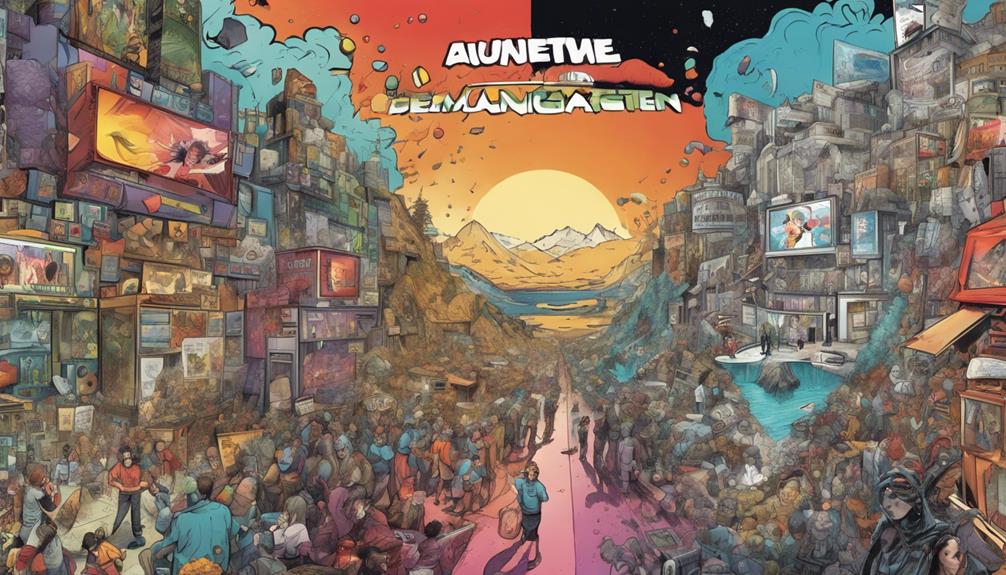When deciding between YouTube and Facebook ads, consider your goals and audience. YouTube often outperforms Facebook, with ads showing up to a 20% higher conversion rate. YouTube users actively seek content, leading to better engagement and lasting impressions, while Facebook's effectiveness has declined since 2020 due to privacy changes. Plus, YouTube allows for 90 days of tracking user interactions, compared to Facebook's seven days, giving you deeper insights into behavior. Ultimately, understanding these differences can help you maximize your advertising impact. Stick around to uncover more about choosing the best platform for your needs!
Key Takeaways
- YouTube's targeting capabilities allow advertisers to reach users actively searching for content, enhancing ad relevance and engagement.
- Facebook's ad effectiveness has declined due to privacy changes, limiting audience reach and tracking capabilities.
- YouTube offers extended tracking of 90 days, providing deeper insights into customer behavior compared to Facebook's seven-day limit.
- Lower competition on YouTube often translates to more cost-effective ad rates and higher conversion potential for advertisers.
Advertising Effectiveness Overview
When it comes to advertising effectiveness, the stark differences between Facebook and YouTube can greatly impact your campaign's success. Facebook's reliance on user data has faltered due to privacy changes, leading to diminishing returns on ads since 2020.
In contrast, YouTube serves as a powerful platform where users actively seek recommendations, making it a more cost-effective option with lower competition. While Facebook's tracking capabilities are limited to seven days post-click, YouTube allows insights for up to 90 days, enhancing your understanding of customer behavior. This extended tracking can greatly boost your return on investment.
Ultimately, the choice between these platforms hinges on your specific advertising goals, audience engagement, and the depth of insights you require for effective campaigns.
Targeting Capabilities Comparison

The targeting capabilities of YouTube and Facebook reveal significant differences that can affect your advertising strategies and outcomes.
On YouTube, you can target users actively searching for content or solutions, allowing for more relevant ad placements. YouTube even lets you engage users who've interacted with competitor content, boosting your visibility during competitors' videos.
In contrast, Facebook's targeting options have been limited by privacy changes, making it tougher to reach specific audiences effectively. While Facebook primarily benefits larger brands, YouTube serves niche businesses better by allowing precise targeting of interested users.
This distinction is vital for determining where to invest your advertising budget for maximum impact.
Cost-Effectiveness Analysis

Understanding the differences in targeting capabilities leads to a closer examination of cost-effectiveness between YouTube and Facebook ads, where YouTube often proves to be more budget-friendly due to lower competition and higher engagement rates.
With YouTube, you're engaging users actively searching for content, which translates to a higher likelihood of conversion.
Facebook, on the other hand, has seen diminishing returns since 2020, partly due to privacy changes limiting data quality. This makes YouTube a more attractive option for those looking to maximize their advertising budget.
Additionally, YouTube's ability to target users based on their interactions with competitor content enhances your chances of reaching interested audiences, ensuring you get more bang for your buck in your advertising efforts.
Tracking and Analytics Differences
Tracking and analytics play a crucial role in determining the effectiveness of your advertising strategy, and here, YouTube considerably outpaces Facebook.
With YouTube, you can track user interactions for up to 90 days after a click, giving you deeper insights into customer behavior. This extended tracking period helps you refine your ads based on actual engagement patterns.
In contrast, Facebook limits tracking to just seven days, which can hinder your ability to assess long-term performance. The extensive analytics YouTube provides allows you to understand what's working and what isn't, ultimately improving your return on investment.
If you're serious about optimizing your ad strategy, leveraging YouTube's tracking capabilities is the way to go.
Niche Business Scalability

Scaling a niche business effectively requires precise targeting and tailored strategies that resonate with specific audiences. YouTube stands out as a powerful platform for this purpose. Here's why you should consider it:
- Cost-Effectiveness: Lower competition means better ad rates.
- Engaged Audience: Users actively seek solutions, enhancing ad relevance.
- Extended Tracking: Analyze customer behavior for up to 90 days.
- Competitor Targeting: Reach users engaging with similar content.
User Intent and Engagement

YouTube's ability to tap into user intent and engagement makes it a standout platform for advertisers looking to connect with motivated audiences.
When users visit YouTube, they often seek solutions, entertainment, or information, indicating a high level of intent. This environment fosters engagement, as viewers actively choose to watch content that interests them.
By placing ads within relevant videos, you can reach users who are already invested in topics related to your product.
In contrast, Facebook's algorithm often disrupts user experiences with less targeted ads, making it harder to capture genuine interest.
With YouTube, your ads can resonate with viewers, leading to higher engagement rates and more meaningful interactions, ultimately driving better results for your advertising campaigns.
Success Stories and Case Studies

How can success stories from brands that effectively leverage YouTube ads inspire your own advertising strategy?
These examples showcase the potential of YouTube to drive engagement and conversions. By analyzing their tactics, you can refine your approach.
- Nike: Created compelling storytelling ads that resonated with their audience.
- Red Bull: Leveraged extreme sports content to attract a niche audience.
- Dove: Used relatable messaging to promote self-esteem, resulting in viral success.
- GoPro: Encouraged user-generated content, enhancing community involvement.
These brands demonstrate that when executed well, YouTube ads can greatly enhance brand visibility and drive sales.
You can learn from their strategies to elevate your own campaigns!
Choosing the Right Platform

Deciding between YouTube and Facebook for your advertising strategy hinges on understanding your target audience and the unique strengths of each platform.
If you've got a niche product, YouTube's ability to target engaged users searching for solutions can drive better results. With lower competition and extended tracking capabilities, you can analyze customer behavior over a longer period, enhancing your ad ROI.
On the other hand, if you're targeting a broad audience, Facebook's massive user base might seem appealing, but recent data limitations and reduced targeting effectiveness can hinder your success.
Ultimately, assess your goals, audience, and budget carefully. Choosing the right platform can make all the difference in your advertising effectiveness and overall campaign success.
Conclusion
In the battle of YouTube versus Facebook ads, the choice ultimately boils down to your unique goals and audience. If your goal is to reach a younger audience, YouTube may be the better option, as it has a higher percentage of users under 50 compared to Facebook. However, if you are looking to target an older demographic, Facebook may be more effective. Both platforms offer expert strategies for top rankings, but it’s important to consider your specific marketing goals and target audience to determine which platform will best suit your needs.
YouTube shines with its vast reach and engaging content, while Facebook offers precise targeting.
Weigh the pros and cons, and you'll reveal the secret to advertising success that can skyrocket your brand to new heights.
Whether you choose one or the other, your marketing strategy can truly be a game-changer in the digital landscape!









